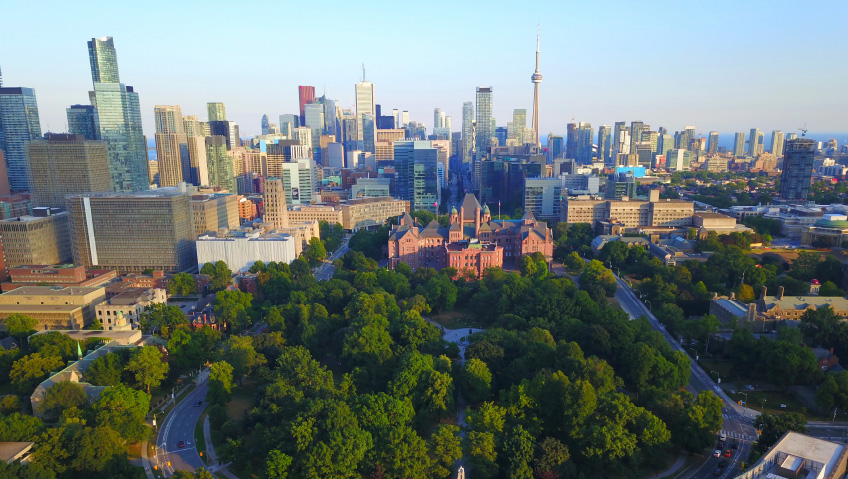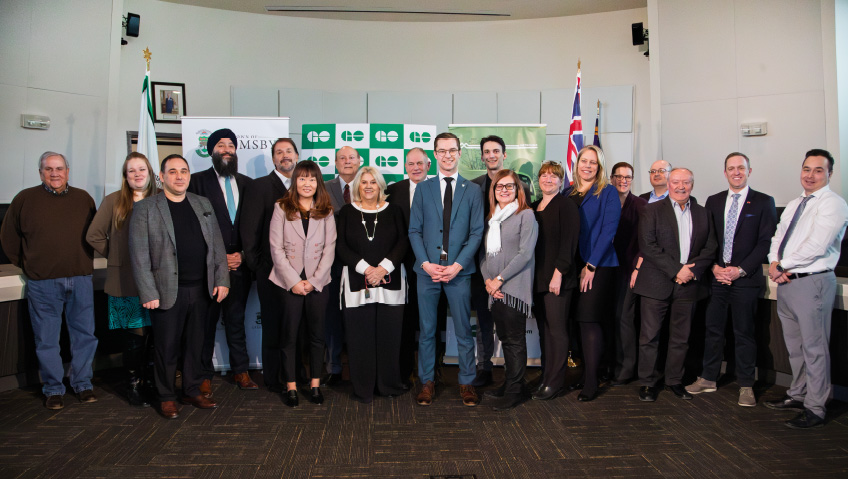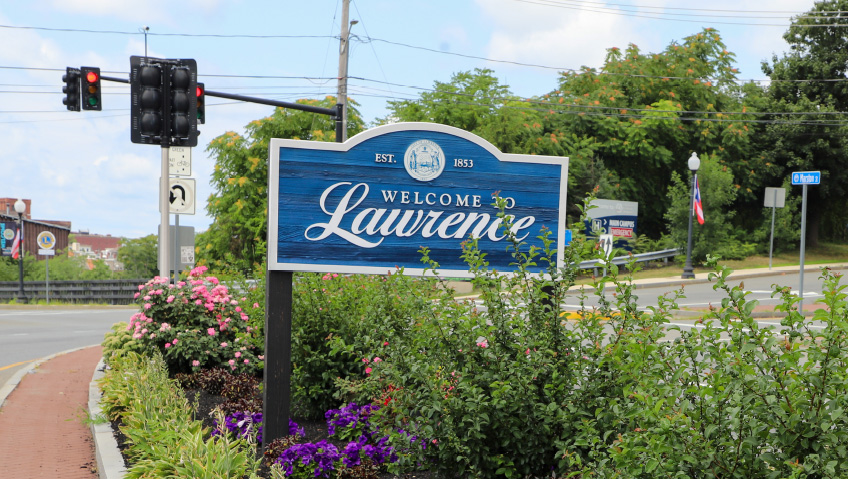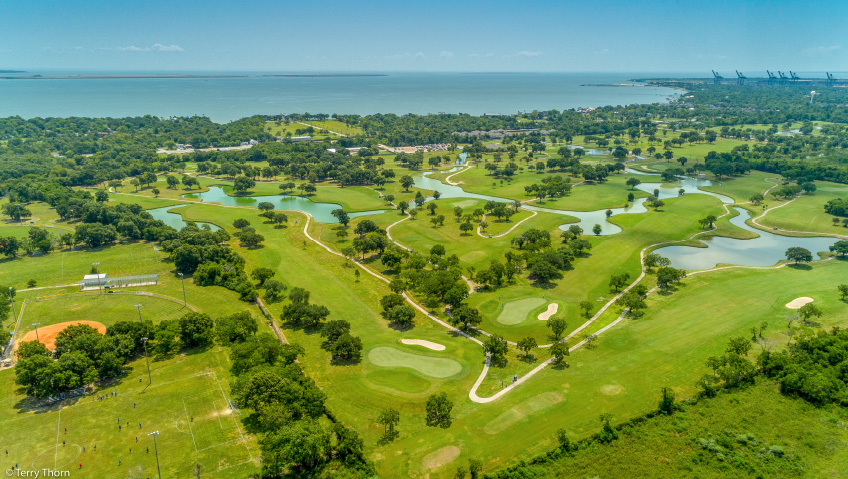Bordering the United States and the Great Lakes, the Province of Ontario is world-famous for its many sites and attractions. Want a romantic weekend getaway? Try the City of Niagara Falls. Feel like fishing, hiking, camping, or canoeing? Ontario modestly boasts over a quarter of a million lakes, holding one-fifth of the planet’s fresh water.
From cycling in the summer to skiing and snowshoeing in winter, experiencing outdoor festivals and attractions, shopping at unique artisanal shops and galleries, and experiencing Indigenous culture first-hand, Ontario is the perfect place to visit year-round.
Popular with travellers from across the province and Canada, the United States, Europe, Asia, and countless nations, Ontario saw $38 billion in tourism revenue in 2019. However, when COVID struck a year later, a combination of land and air travel restrictions, border closures, proof of vaccination, quarantining, bans on non-essential travel, and other measures saw the all-time high plummet to $13.6 billion, a 64.2 percent drop.
The impact on Ontario’s economy was devastating, as hotels, bars, restaurants, and many attractions were forced to limit attendance, cancel money-making events, or close completely.
Looking ahead
Drawn up by the Tourism Industry Association of Ontario (TIAO) and the Ontario Chamber of Commerce, the 2022 State of the Ontario Tourism Industry Report (available at TIAO’s website) addresses the pandemic’s impact on the province’s tourism industry and puts forth numerous practical recommendations supporting recovery, both immediate and long-term. The main issues remain and include debt repayment, and staffing.
“During COVID, a number of tourism and hospitality operators took on massive debt loads just to remain afloat,” says Dr. Jessica Ng, Ph.D., Director of Policy and Government Affairs for TIAO and the report’s main author. Dr. Ng explains that while the worst of the pandemic is behind us, financial challenges remain.
Over the past three years, about seven out of ten operators in Ontario took on federal loans to survive, including from CEBA (Canadian Emergency Business Account), Regional Relief and Recovery Fund (RRRF), and HASCAP loans available for businesses that had revenues decline by 50 percent or more during the pandemic.
Although deadlines have been extended for some loans to December 31, 2023 and repayment can be made after that date, tourism and hospitality businesses are concerned about the deadline, and losing out on a forgivable portion of the loans.
“Last year was really the time the province and border reopened, so businesses haven’t even had a full year of welcoming tourists back. And because there’s real concern that their revenues are not yet high enough for them to pay back those loans, we’re advocating to extend the deadline and increase the amount that can be forgivable,” says Dr. Ng of one of TIAO’s recommendations.
Along with COVID-induced debt, every related business—restaurants, bars, hotels, and entertainment venues—is dealing with a labour crisis. “That’s probably the number one concern,” says Dr. Ng.
“Longstanding challenges in retention that had occurred even before COVID worsened after COVID, with people being displaced from their jobs. Once laid off from tourism and hospitality, many just haven’t returned, and have moved on to other industries.”
Advocating for an industry
With the mission of being “the principal authority and driver of economic and regulatory policies that are conducive to the sustainable growth and prosperity of the Ontario Tourism Industry,” TIAO works with stakeholders and represents the interests of its members in issues facing Ontario’s vital tourist sector.
Some of TIAO’s key objectives include raising the profile and importance of the province’s tourism and hospitality industry with government, media, and the public; advocating further investment in the sector; and keeping member organizations informed about important issues.
Dr. Ng has been with the Association for about two years. She leads policy and advocacy; lobbies government, cabinet ministers, and elected officials where necessary; oversees TIAO’s research; develops research reports; and handles government briefs and all submissions to government.
One of TIAO’s recommendations appearing in the report was a freeze on the federal government’s proposed 6.3 percent excise tax increase on beer, wine and spirits. Subsequently, the April 1 increase, initially set to match inflation, was adjusted to two percent. The lower amount will help breweries, wineries, and distilleries, along with tourism and hospitality operators, since beverage alcohol can also be part of the tourism experience.
Another TIAO success was recommending the enhancement of destination-marketing funding to get major cultural, business, and sporting events back to Ontario. “It was announced in the federal budget that there will be multi-year funding for Destination Canada—for the regional development agencies to help out local tourism organizations on local tourism projects—which is fantastic,” says Dr. Ng.
Strength in membership
Created in 2007, TIAO was originally known as The Tourism Federation of Ontario. The origins of the Association go back to a report from the 1980s that outlined the need for an advocacy organization to help unify the voice of the tourism industry when addressing these issues with the province.
One reason behind TIAO’s growth in the past few years is COVID. During the pandemic, especially in the early days, there was much uncertainty in the travel, tourism, and hospitality businesses. They wanted to know what was going on with provincial regulations affecting their companies—especially closures and capacity restrictions—and they needed information fast. Many new members signed up to receive timely data and came together to express their concerns to the government more emphatically since many felt COVID’s impact on tourism was not being communicated.
“TIAO helps to amplify the voice of individual organizations and businesses, especially when they are dealing with government,” says Dr. Ng. “We help individual members and regions come up with solutions to challenges that prevent tourism growth. Together, we get access to government to favourably influence policy decisions that benefit tourism businesses, organizations, and tourism growth.”
Among the many other benefits are member-only resources on the TIAO website, timely updates on legislation that is new or under review, special member pricing for events, lobbying, activities, member pricing for insurance benefits, and even help finding interns.
According to the UN Environment Program and UN World Tourism Organization, sustainable tourism is “tourism that takes full account of its current and future economic, social and environmental impacts, addressing the needs of visitors, the industry, the environment and host communities.” And like ecotourism and responsible travel, sustainable tourism is on the rise. The tourism and travel industry is committed to delivering not only memorable visitor experiences but doing so in a sustainable way that protects the earth.
In 2018, TIAO partnered with GreenStep, which delivers sustainable tourism certification programs to businesses in the province. As an exclusive purveyor of the sustainable tourism certification, GreenStep is currently working with TIAO on a project to provide tourism regions with the opportunity to become certified in sustainable tourism and offer resources for businesses in their region.
Celebrating culture
Another fast-growing market is Indigenous tourism. Showcasing Native Canadian culture and experiences from the perspective of Indigenous operators, it was the fastest-growing tourism sector pre-COVID and remains as popular as ever. “One in three international visitors to Canada is interested in the Indigenous tourism experience,” says Dr. Ng. “It’s a half-a-billion-dollar industry in Ontario, which is amazing.”
TIAO continues to work with Indigenous Tourism Ontario (ITO), experts in the area, on building capacity for Indigenous operators and attracting more visitors.
“It’s a market that will see continued growth, and we’ll continue to advocate for that,” comments Dr. Ng. “This growth in Indigenous tourism is tied into people’s growing desire to experience authentic cultural offerings when they travel, especially international visitors.
“There is also the growth of wellness trends, a desire to be connected with nature, which we saw during and after COVID.” This is linked to an uptick in post-pandemic outdoor activities like hiking and biking and agri-tourism, where visitors may go to farms to pick fresh produce or visit wineries, cideries, and distilleries. “These are new opportunities that we see for the future of tourism in Ontario, this greater share of visitor spending.”
Although the year isn’t even half over, Dr. Ng and the team at TIAO are focussing on the coming months and beyond. The pandemic took a toll on travel and tourism, and TIAO wants to see definite steps taken toward financial sustainability for the industry.
Some areas of Ontario, especially the North, depend on income from visitors to keep hunting, fishing, and campgrounds in business, and guests from the United States are proving slow to return. Even in large urban centres like Toronto, Montreal, Ottawa, and Vancouver, such things as business travel, meetings, and conventions are returning only in a trickle, leaving downtown bars, restaurants, and hotels still under capacity.
“Staffing challenges are a long-term issue,” says Dr. Ng, “and we’re working on that front in terms of getting the government programs that we need to attract people back to the industry. [We’re working on] generating new interest, getting more economic immigrants into the province and into tourism, and re-conceptualizing what’s possible in a tourism career. It’s not just about short-term jobs, either—there are plenty of long-term, fulfilling careers.”






